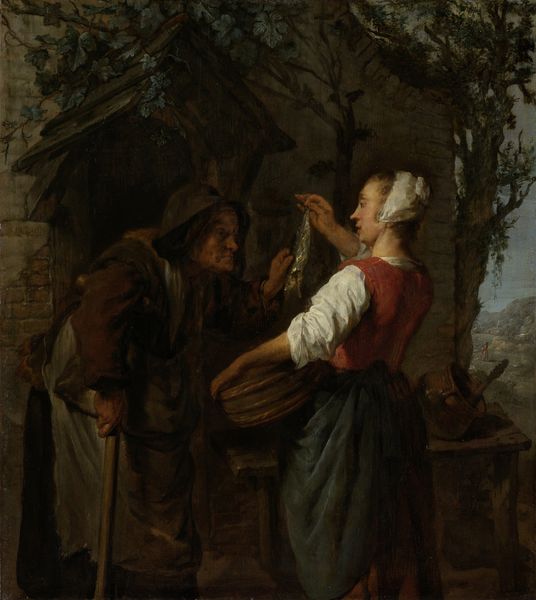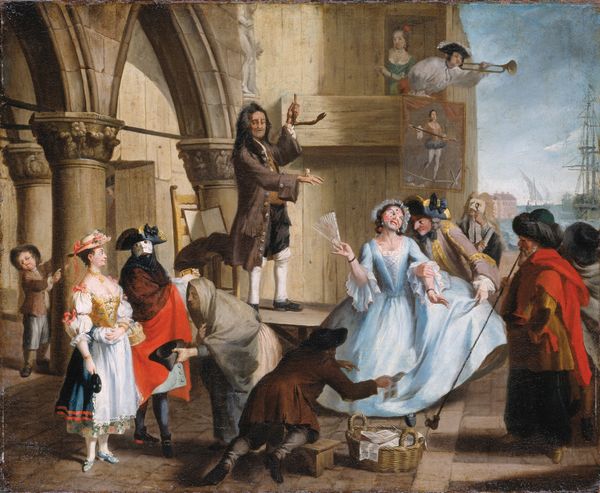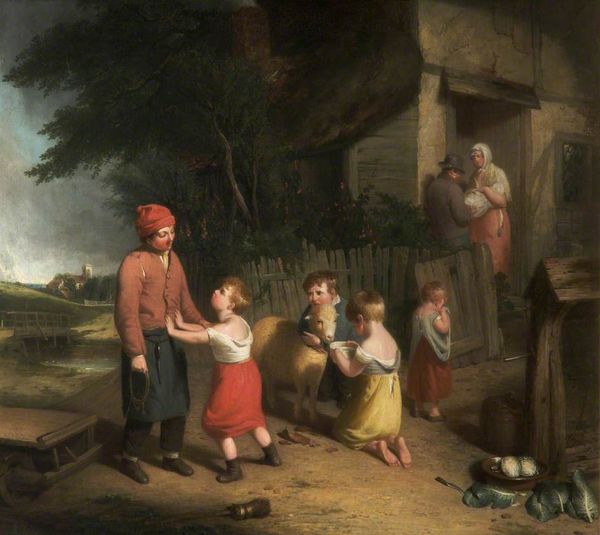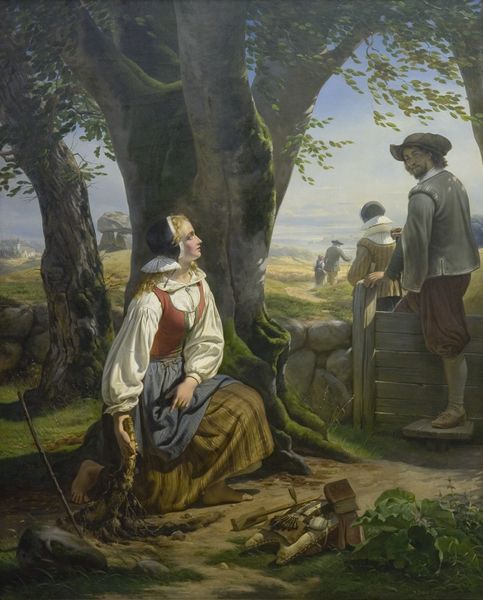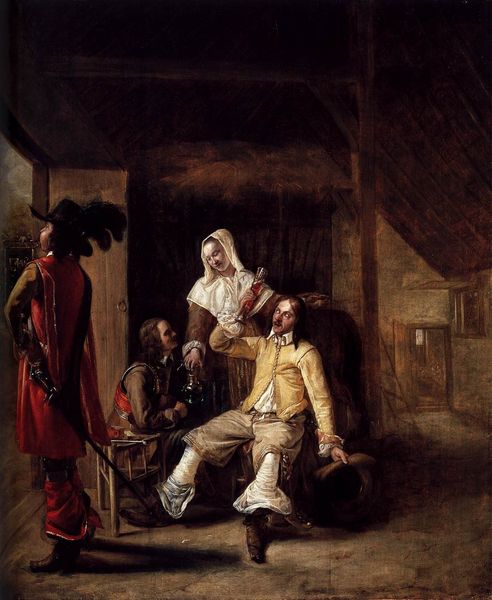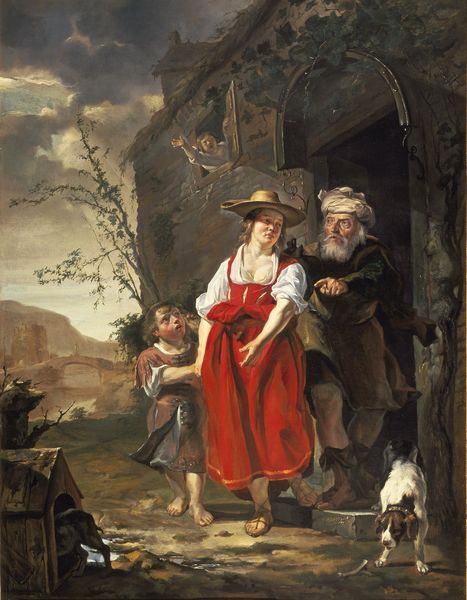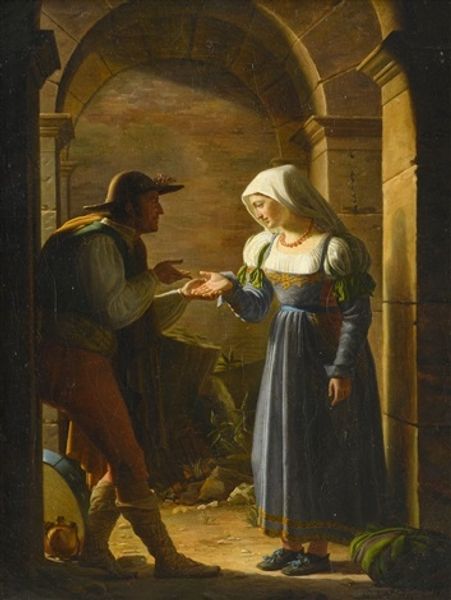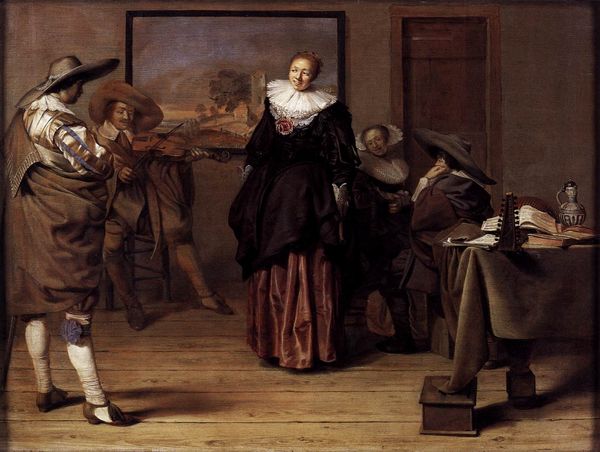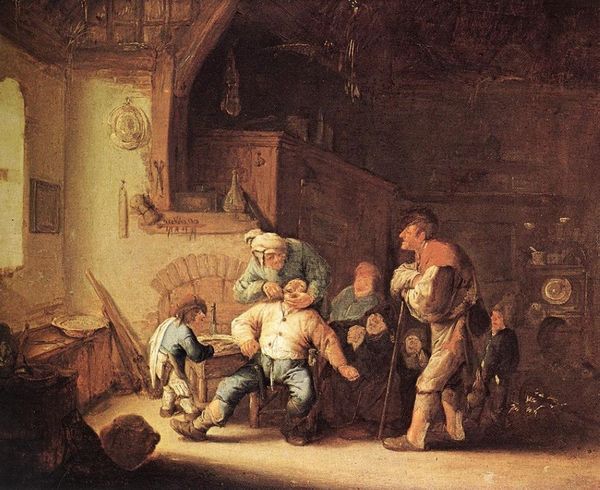
painting, oil-paint
#
portrait
#
narrative-art
#
baroque
#
dutch-golden-age
#
painting
#
oil-paint
#
figuration
#
group-portraits
#
genre-painting
#
history-painting
Copyright: Public domain
Editor: So, this is Jan Steen's "Return of the Prodigal Son" from 1670, oil on canvas. There’s such warmth in this scene; it feels so familiar and lived-in, but what details do you see resonating with deeper meanings? Curator: The emotional power comes through the symbolic gestures, wouldn't you say? Look at the father’s hands clasping those of his son; hands that carry stories, labor, forgiveness. What feeling do you get when you observe the father’s gesture compared to that of the son? Editor: There is tenderness, but the son seems a bit... uncertain, almost ashamed. Curator: Precisely! Steen uses costume and condition as symbolic language, doesn’t he? Notice the son's tattered clothing compared to the richness of the garments surrounding him. It speaks of lost innocence, remorse. And the dog, jumping with excitement, can be seen as an icon for unconditional love. Are there other visual components in the composition to catch the viewer's eyes, perhaps objects we normally don’t attribute as components that carry strong meaning? Editor: Oh, like the calf's head? That seems a little… unsettling. Curator: Indeed. It symbolizes the fatted calf, a sacrifice for the returning son. Consider how that element connects back to ideas of repentance, acceptance, celebration. See how this links back to traditional Christian symbolism? These motifs help shape the viewer’s interpretation of what ‘homecoming’ represents, on multiple layers. Editor: It’s fascinating how much is communicated through these choices! I never considered how potent an image of a dog jumping or a slaughtered calf can be! Curator: Yes, it’s an intersection of storytelling, using familiar symbols of a broader cultural memory, blended into an easily relatable and down-to-earth tableau. It reminds us of the timeless cycle of deviation and acceptance within family structures. Editor: Thanks; this makes me rethink how everyday images carry emotional weight.
Comments
No comments
Be the first to comment and join the conversation on the ultimate creative platform.
